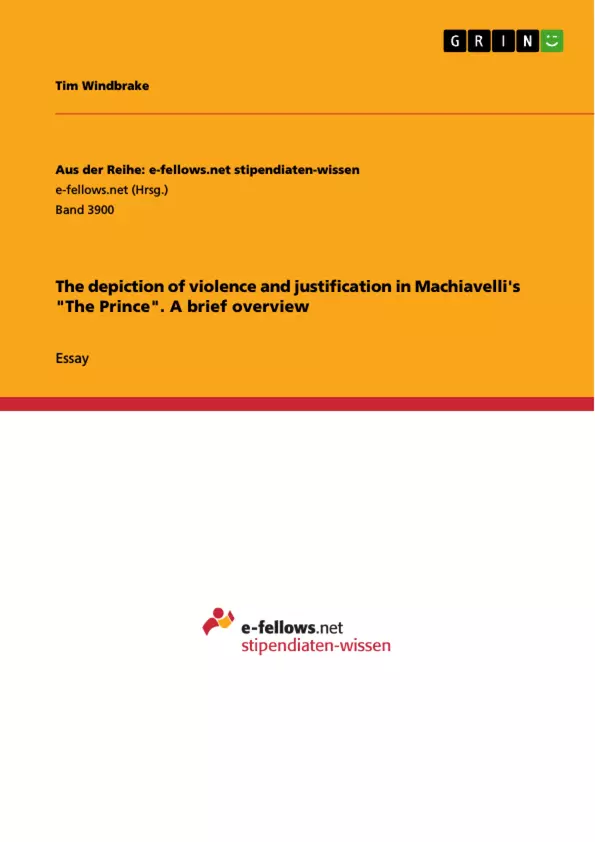This essay argues that Machiavelli’s depiction and justification of violence in 'The Prince' follows from a consequentialist view in which violence can and should be used by a prince in order to provide order and stability to the people if necessary. Machiavelli is not trying to argue whether the act of violence itself is ethically right or wrong. His aim in 'The Prince' is to assess the effectiveness of actions that serve the prince’s goals, namely, order and stability for himself and the people, where violence and cruelty are normal political tools a prince can and should use for his advantage.
Inhaltsverzeichnis (Table of Contents)
- Depicting the strategic use of violence
- The consequentialist justification of violence
- Assessing the consequentialist justification
- Conclusion
Zielsetzung und Themenschwerpunkte (Objectives and Key Themes)
This essay examines Machiavelli's portrayal and justification of violence in "The Prince," arguing that his approach stems from a consequentialist perspective. Machiavelli emphasizes the use of violence by a prince to ensure order and stability for the people, even if such actions are morally ambiguous. He emphasizes the effectiveness of actions in achieving these goals, rather than their intrinsic morality.
- The strategic use of violence by a prince
- The consequentialist justification of violence
- The significance of the prince's true ends
- The role of security and stability for the people
- The justification of violence in a consequentialist framework
Zusammenfassung der Kapitel (Chapter Summaries)
- Depicting the strategic use of violence: This section explores how Machiavelli portrays the strategic use of violence, using the example of Ramiro d'Orca, who was executed for his brutality, and the concept of "crushing" enemies to prevent revenge. It suggests that Machiavelli prioritizes order and stability over ethical considerations.
- The consequentialist justification of violence: This section explains Machiavelli's consequentialist view, arguing that actions are judged by their effectiveness in achieving desired outcomes, such as unity and stability. The prince's use of violence, even cruelty, is justified if it strengthens his power and ensures order.
- Assessing the consequentialist justification: This section examines the ambiguity in "The Prince" concerning Machiavelli's ultimate goal. It discusses two interpretations: a self-serving, egocentric view and a view focused on providing order and stability for the people. The legitimacy of Machiavelli's justification of violence depends on the true end he seeks.
Schlüsselwörter (Keywords)
Key terms and concepts central to this work include violence, consequentialism, order, stability, Machiavellianism, “The Prince,” strategic use of violence, cruelty, effectiveness, prince, unity, security, and the prince's true ends.
- Citar trabajo
- Tim Windbrake (Autor), 2020, The depiction of violence and justification in Machiavelli's "The Prince". A brief overview, Múnich, GRIN Verlag, https://www.grin.com/document/1128121



